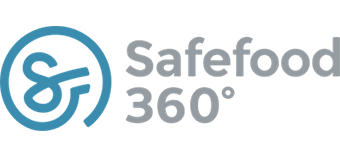The importance of integration in the pursuit of great software
Let’s start by defining software or system integration. In information technology, “integration” is the process of linking together different computing systems and software applications physically or functionally, to act as a coordinated whole.
Benefits of integration
This makes a lot of sense. It is unrealistic to expect a single software vendor to provide the entirety of software components that a typical manufacturing business needs to operate effectively. It has been tried by SAP, Microsoft and others, but never remotely achieved. Therefore, most companies will end up purchasing a variety of different software applications for a variety of different business needs. ERP, CRM, QMS, LIMS…the list of software acronyms that you end up with from individual vendors can be staggering.
The benefits of integration include:
- Automation of processes
- Scalability of processes
- Reduction in double work
- Reduction in errors
The prospect of connecting different systems together to form a single congruous platform can be very compelling and at first glance, hard to argue with. This is why the topic of integration is on the mind of every company in the process of purchasing software. And rightly so. No company wants to purchase another software silo and in many cases there are clear business directives stipulating just that. However those individuals tasked with the responsibility of vetting the software applications and making the purchase might not always appreciate what is required to make integration happen and the expected impacts.
Integration is an investment
Like all business initiatives, integration is subject to traditional cost benefit analysis and this is where the cold hard reality kicks in. You see, integration of business systems is typically not free nor is it cheap. On the contrary, it is an expensive undertaking for any business. Facilitating communication between two or more disparate enterprise software applications, even at a rudimentary level, can run to tens of thousands of dollars and significantly more depending upon a number of factors including;
- The openness of each software application (i.e. how willing are they to communicate with other software).
- Their ability to communicate with each other directly, as opposed to depending upon a bridge being built (aka middleware).
- The level of software development expertise within the company, and how much external input from a system integrator is required.
Very often, when you conduct a thorough integration cost / benefit analysis you find that the ROI is just not there.
Assessing the value of integration
ABC Foods is in the process of purchasing a new off the shelf Quality Management Software to replace their manual paper-based system. The steering committee has decided that the new QMS must integrate with their current ERP System so that Supplier Contact Information can be maintained in both systems without double entry. The company has approximately 200 Suppliers.
This seems like a reasonable requirement, and the benefits are clear; QC will have up-to-date and error-free Supplier contact information available to them at all times. What they haven’t planned for is the considerable upfront complexity this adds to the project, leading to a substantial increase in overall cost. Assuming their chosen QMS vendor is unable to integrate with their ERP ‘out of the box’, which is more often than not the case, then they will either have to sacrifice their preferred software in favour of a more expensive, customized and possibly sub-standard solution. Or, alternatively, they will need to pay for a bridge to be built to interface the two solutions.
Either avenue will result in an increased final cost and increased complexity during the selection process. What the steering committee should have mandated is the selection of an “open” system which will provide integration possibilities, if/when that might be required in the future. This is a far more sensible and realistic requirement as it allows for the selection of the right QMS system without any irrelevant constraints. Coming back to the original requirement to centralize the contact information for 200 suppliers, this is something that can be done in a semi-automated fashion even without any integration. A simple work process can be established which might take an extra few minutes of an administrators time each week to duplicate the contact information, at almost zero additional cost. A perfectly adequate stop gap solution until such a time as integration makes commercial and business sense.
There is no doubt that greater process efficiencies and improved visibility can be achieved through integrating software solutions with one another, and this is certainly the direction the world is moving. Just as we are becoming more connected, we are also becoming more integrated. But we must be careful that in the pursuit of this Holy Grail we don’t impede our primary objectives in purchasing software in the first place. Software is ultimately designed to automate common processes and improve operational performance. In specific and focused areas like Food Safety Compliance for example, some software is significantly better than others.
The following criteria should be considered when undertaking the purchase of a new software application, as it relates to integration:
- The software should provide an integration API based upon industry standard protocols and web services.
- Specific integration points should not form part of the RFP. Not until the software is in place and successful, do the integration points become clear.
- Be suspicious of any software vendor that promises the ability to integrate with anything. It may well be true but will carry a significant development and consulting cost.
- The steering committee should accept that integration will not be on the agenda for 12-18 months following implementation. This is to safe guard the initiative from abrupt and premature complexity and not allow it become another failed statistic.
- When the time comes, a thorough business requirements analysis should be conducted which will help to identify integration points that offer a demonstrable return on investment.
Most importantly, as the person responsible for selecting a new software application for your company, you need to choose the right tool for the job. You will already have much more essential criteria to consider and benchmark your software vendors against. So, the best thing to do is to keep the objectives of the project on the task at hand, while acknowledging the importance integration may play at an appropriate time in the future.
How to integrate your systems with Safefood 360?
Safefood 360° offers the same, extensive integration opportunities as any other major food safety compliance software. We are currently optimizing an API that will allow you to join your systems with the software once publicly released. If you are interested in integrating your systems with Safefood 360°, you should talk to your account manager and find out what the appropriate integration points are and if the business case can be made for justifying an integration project.




Leave a Reply
Want to join the discussion?Feel free to contribute!